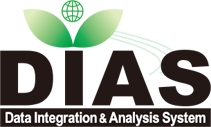


  |  |
| Name | TRITON Data |
| Metadata Identifier | TRITON20240531093115-DIAS20221121113753-en |
| Name | Data Management Office |
|---|---|
| Organization | Japan Agency for Marine-Earth Science and Technology |
| Address | 3173-25, Showa-machi, Kanazawa-ku, Yokohama, Kanagawa, 236-0001, Japan |
| dmo at jamstec.go.jp |
| Name | DIAS Office |
|---|---|
| Organization | Japan Agency for Marine-Earth Science and Technology |
| Address | 3173-25, Showa-Cho, Kanazawa-ku, Yokohama-shi, Kanagawa, 236-0001, Japan |
| dias-office@diasjp.net |
| Name | Data Management Office |
|---|---|
| Organization | Japan Agency for Marine-Earth Science and Technology |
| dias-mng at jamstec.go.jp |
| Name | TRITON Office |
|---|---|
| Organization | Japan Agency for Marine-Earth Science and Technology |
| triton at jamstec.go.jp |
publication : 2010-05-18
Japan Agency for Marine-Earth Science and Technology (JAMSTEC) has developed Triangle Trans-Ocean Buoy Network (TRITON) buoy in 1998, and nearly 20 moorings have been deployed in the western tropical Pacific and eastern tropical Indian Ocean. These moorings in Pacific Ocean make Tropical Atmosphere Ocean (TAO)/TRITON array in cooperation with Pacific Marine Environmental Laboratory (PMEL) and National Data Buoy Center (NDBC) in National Ocean and Atmospheric Administration (NOAA) in United States. On the other hand, the moorings in Indian Ocean make Research moored Array for African-Asia-Australian Monsoon Analysis and prediction (RAMA) array as a multinational effort for Indian Ocean Observing System. These arrays are a part of Global Climate Observing system (GCOS), Global Ocean Observing System (GOOS) and Global Earth Observing System (GEOSS).
Each buoy measures temperature, salinity, mixed layer currents for oceanic variables, and wind temperature, relative humidity, barometric pressure, precipitation and short wave radiation for meteorological variables. These measured variables is essential for monitoring, understanding and forecasting of short-term climatic phenomena, such as El Nino and southern oscillation and Indian Ocean dipole event.
Data and graphic displays from these arrays are updated every day, and freely available to use for research, operational forecasting, educational activities and so on. For more detailed information, please refer TRITON and IOMICS web sites.
TRITON:http://www.jamstec.go.jp/jamstec/TRITON/real_time/
IOMICS:http://wwwjamstec.go.jp/iorgc/iomics/
oceans
| Begin Date | 1998-03-01 |
| End Date | 2010-03-31 |
| North bound latitude | 8 |
| West bound longitude | 90 |
| Eastbound longitude | 156 |
| South bound latitude | -5 |
| Keyword Type | Keyword | Keyword thesaurus Name |
|---|---|---|
| theme | Oceans > Ocean Temperature > Water Temperature, Oceans > Salinity/Density > Conductivity, Oceans > Ocean Temperature > Sea Surface Temperature, Oceans > Ocean Circulation > Ocean Currents, Oceans > Ocean Heat Budget > Shortwave Radiation, Oceans > Ocean Winds > Surface Winds, Atmosphere > Atmospheric Water Vapor > Humidity, Atmosphere > Atmospheric Pressure > Surface Pressure, Atmosphere > Atmospheric Temperature > Air Temperature, Atmosphere > Precipitation > Precipitation Rate, Oceans > Salinity/Density > Salinity, Oceans > Salinity/Density > Density, Oceans > Sea Surface Topography > Sea Surface Height, Oceans > Bathymetry/Seafloor Topography > Water Depth | GCMD_science |
| theme | TRITON | project |
| Keyword Type | Keyword | Keyword thesaurus Name |
|---|---|---|
| theme | DIAS > Data Integration and Analysis System | No_Dictionary |
Triangle Trans Ocean Buoy Network : http://www.jamstec.go.jp/jamstec/TRITON/real_time/php/top.php
IOMICS (Indian Ocean Moored buoy network Initiative for Climate Studies) : http://www.jamstec.go.jp/iorgc/iomics/index.html
file download : https://data.diasjp.net/dl/storages/filelist/dataset:138
| name | version | specification |
|---|---|---|
| CSV | no information |
If data provider does not have data policy, DIAS Terms of Service (https://diasjp.net/en/terms/) and DIAS Privacy Policy (https://diasjp.net/en/privacy/) apply.
If there is a conflict between DIAS Terms of Service and data provider's policy, the data provider's policy shall prevail.
If you plan to use this dataset for a conference presentation, paper, journal article, or report etc., please include acknowledgments referred to following examples. If the data provider describes examples of acknowledgments, include them as well.
" In this study, [Name of Dataset] provided by [Name of Data Provider] was utilized. This dataset was also collected and provided under the Data Integration and Analysis System (DIAS), which was developed and operated by a project supported by the Ministry of Education, Culture, Sports, Science and Technology. "
Publication list
http://www.jamstec.go.jp/jamstec/TRITON/real_time/overview.php/po-o4.php